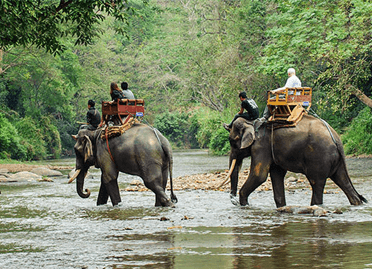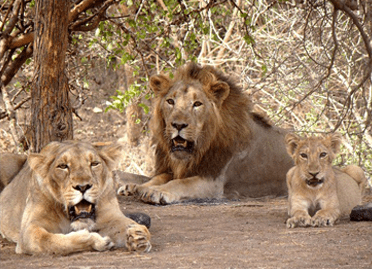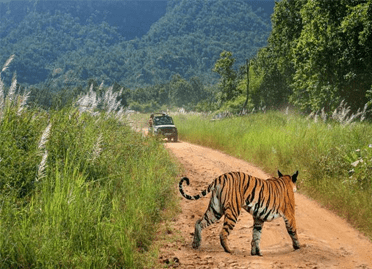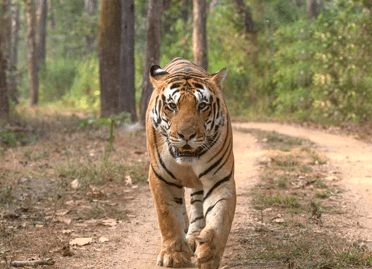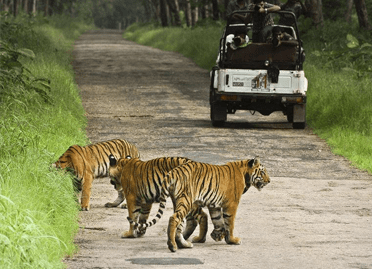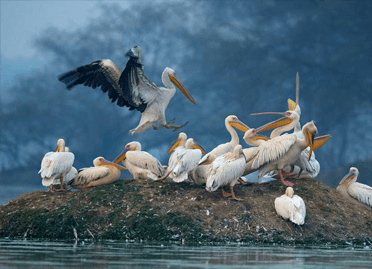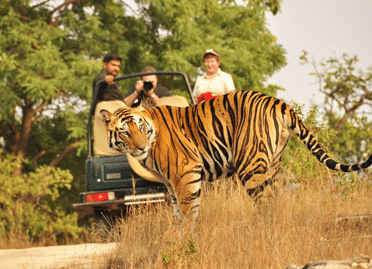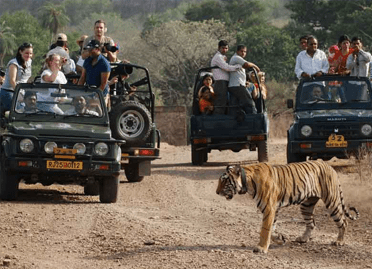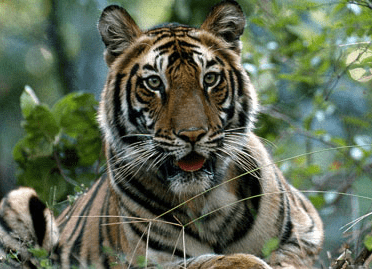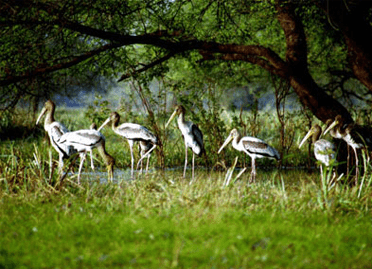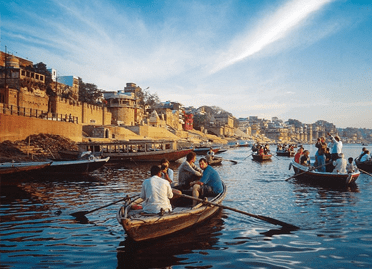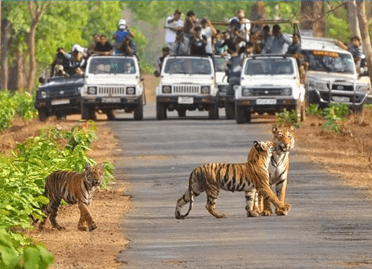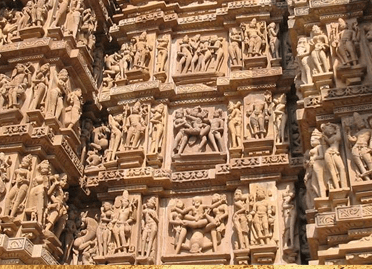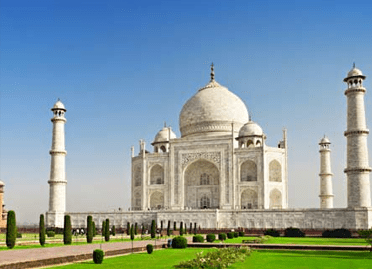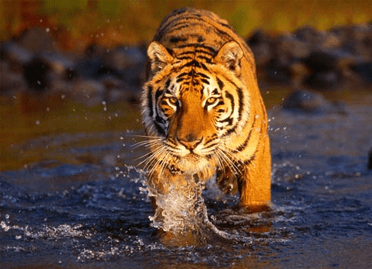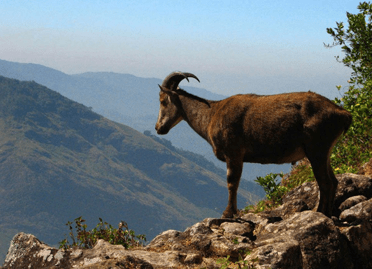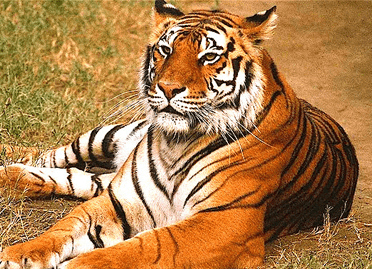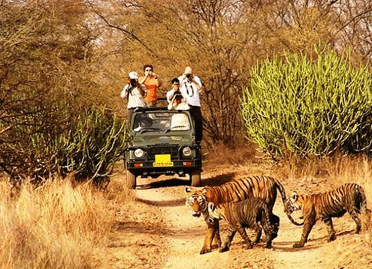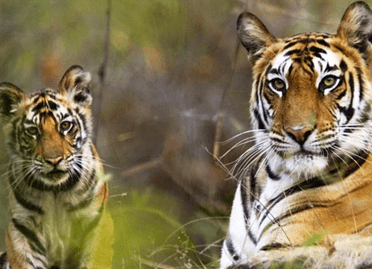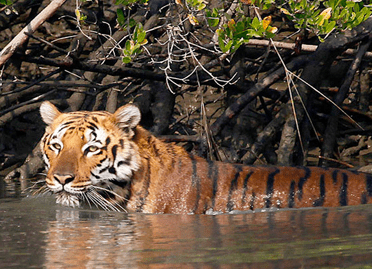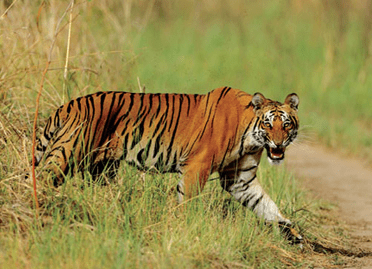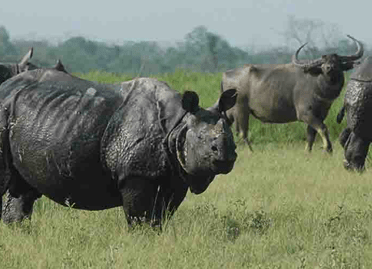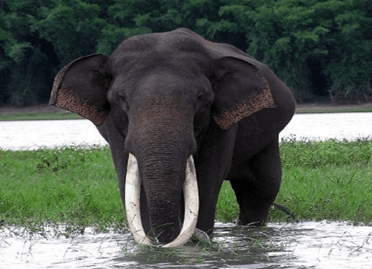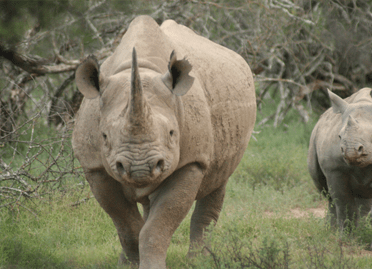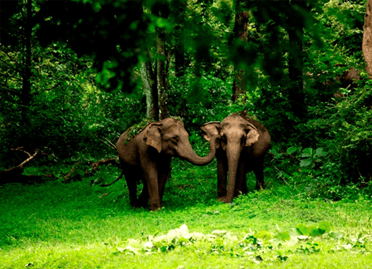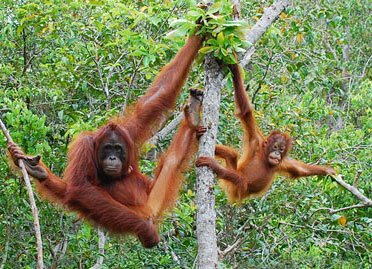India wildlife Tour Packages
This is a reality that India is one of the most beautiful tourist destinations globally. This country is known not only for its rich cultural heritage but also has some of the most popular and exciting wildlife spotting locations. Wildlife safari tours in India are the dream of many wildlife lovers. In the Indian jungle, some of the popular tourist attractions are tigers, Asiatic lions, elephants, gaurs, big cats, one-horned rhinos, deer, crocodiles, and many other animals and birds. The country is home to over 800,000 animal species, representing more than 7 percent of all species in the world. Excursions in the wild nature of India will allow travelers to get acquainted with a wide variety of flora and fauna.
It should be noted that in India, a variety of wildlife can be found in all corners of the country. Dense forests, sparse desert landscapes, snow-capped mountains, and various reservoirs - and there are many wildlife species in each place.
India wildlife tour will discover these destinations for you and allow you to experience unforgettable moments.
A short detail of Indian's life
A virtual guide for those who are going to visit the most mysterious country on planet Earth for the first time and those who are looking for new routes through a vibrant and unpredictable country.
India is fascinating and inspiring. It seems that this is not just a country but a separate mysterious world: with magical mountains, stunning plains, vast plantations, endless deserts, and palm-fringed beaches; all this merges into a magnificent ever-changing kaleidoscope of incredible variety. Travelers are fascinated by the expanses of this incredible country and how ancient and modern fit perfectly into modern life here - with rich traditions, history, religious and cultural heritage that has found its niche in today's rapidly developing world. In this delightful country (especially for those here for the first time), people seem to plunge into an increasingly distant past every time, as if travelling in time.
India will appeal to any traveller. You can live in the countryside making "chapatti" with people who have welcomed you into their home or climb to the top of some high mountain, and by lunchtime return back to the village and feel the measured course of life of the colonial era or buy whatever your heart desires at a bustling market in Rajasthan before heading back to an old oriental palace for the night. Here you can see the elusive tiger while camping, relax by a boiling cauldron of masala chai, or spend the evening enjoying the luxury and comfort of an old-fashioned hotel.
A few facts about India that you may not have known:
Chess was invented in India
This country has the most significant number of post offices in the world
Indian Railways is one of the largest employers globally; at last count, it has 1.5 million employees; and the first train in India was launched between Mumbai (formerly Bombay) and Thane in 1853.
The concept of "zero" in the modern counting system was introduced in India by the famous Indian mathematician Aryabhata.
India is the only country that has 350,000 active mosques in the world.
Most Fascinating Places for The Best Wildlife Experience in India
India has a vibrant and diverse fauna and has always attracted the attention of nature lovers from all over the world. India has several wildlife conservation parks and sanctuaries from the huge mountain ranges in the north, the swamplands in the east, to the tip of Kanyakumari in the south. These places offer some of the best—wildlife experiences to their visitors. Here you will find the list of places you must travel to this year for exquisite
wildlife in India .
Cold and rugged mountains, dry and temperate plains, rainy river plains, dry and hot deserts, soggy and wet swamps, moving alpine meadows, and we have it all here in India. There are places where the temperature is below zero, scorching and humid places. There is torrential rain and an extreme draft too. And it's no wonder that's why flora and fauna have been in remarkable adaptations.
Come and explore if you want to delve into wildlife in India. From snow leopards to mighty Bengal tigers to rare one-horned rhinos and the endangered swamp deer, you'll find them here. India is a land of diversities and land of wildlife adventures. Here you will learn about some of the best places in India where you can have some fascinating wildlife experiences:
Ranthambore National Park – Rajasthan
Jim Corbett National Park
Kaziranga National Park - Assam
BR Hills- South India
Kanha Tiger Reserve - Madhya Pradesh
Panna National Park - Madhya Pradesh
Bandhavgarh National Park - Madhya Pradesh
Bandipur National Park - Karnataka
Periyar National Park - Kerala
Hemis National Park - Jammu Kashmir
Gir National Park – Gujarat
Sariska National Park- Rajasthan.
Ranthambore National Park - Rajasthan
India has three magnificent cities that many lucky enough to visit this wonderful ancient country aspire to visit:
Delhi,
Agra, and
Jaipur. The
"Golden Triangle" visit will allow you to see India in the light of its former grandeur and marvel at the skill of the masters of past centuries, and an exciting safari in Ranthambore will get you closer to the beautiful vegetation of the jungle and its inhabitants (including the royal Bengal tigers).
Ranked among India's best royal national parks, Ranthambore National Park proudly preserves the majestic tigers. Surrounded by the Banas and Chambal rivers, the park is an ideal habitat for predators and other animals. Located in the princely province of Rajasthan, Ranthambore National Park is one of the largest national parks in northern India. This wildlife sanctuary is best known for its tigers and is also the best place to see these majestic creatures who love to sunbathe at the stunning ruins of Ranthambore Fort nearby. Other wild animals seen here are leopard, hyena, chital, wild boar, nilgai, etc.
It is trendy for the Tiger Safari, and jeep and minibus safaris are arranged through the undulating terrain of this exciting journey through the forest. The animals found in this park are Wild Boar, Sambar, leopard, Nilgai, and Hyena. You can also see peacocks, lads, and sloths. The real challenge is finding one of the giant old Banyan trees growing somewhere in the forest.
Highlights of Ranthambore National Park
Ranthambore park location is Rajasthan
Area of this park is 392 sq.km
Ranthambore park’s year of establishment is 1980
Best time to visit in Ranthambore park is November to March
Safari visiting hours: from 7.00 am to 10.30 am (morning) and from 2.00 am to 5.30 pm (afternoon)
Jim Corbett National Park
This park is one of India's oldest and most popular parks. It was founded in 1936 on an area of 521 km² located in the Nainital district. The park's territory is a picturesque alternation of hills and swampy lowlands, rivers, lakes, and valleys. Three-quarters of the Jim Corbett is covered in rainforest. More than a hundred species of trees and about four hundred other vegetation species grow in the park. It is home to about six hundred birds, fifty species of mammals, and twenty-five species of reptiles. The park bears the name of an English naturalist, hunter, and conservationist.
Kaziranga National Park:
This park is located in Assam Province, India. The park's lush vegetation is home to two-thirds of the world's great one-horned rhinos. It is the proud bearer of the UNESCO World Heritage Site title and justifies its claim with a mass of natural bliss and serenity. The park boasts the highest density of tigers among protected areas globally; it is also an excellent habitat for breeding populations of elephants, buffaloes, and marsh deer.
Wildlife Tour in BR Hills
BR Hills is one of the best places for a wildlife tour in South India. Spreading across an area of 540 square kilometres, the Sanctuary is believed to be the connector between the Western and Eastern Ghats, and thus the place has a unique ecosystem. It is contiguous with the Cauvery and Kollegal rivers, which add to the charm of this place. The ridges and valleys in the Valley where this Sanctuary is located offer an impressive backdrop. Amidst the thick vegetation of low deciduous forest and Sholas, there are about 800 species.
The Sanctuary is also home to animal species like Gaurs, bears, chital, sambhar, tigers, leopards, wild dogs, elephants, and four-horned antelopes. Around 200 birds live there, such as the Crested Eagle, the white-winged tit and the racket-tailed drongo. Hills of BR offers ample opportunities for adventure sports such as trekking and rafting; the Cauvery and Kapila Rivers offer sports fishing, coracle fishing, and boat riding possibilities.
Kanha Tiger Reserve - Madhya Pradesh
Welcome to the largest national park in Madhya Pradesh. Established in 1955, this park has gained a lot of attention due to its efforts to save the rare and nearly extinct species of the Swamp Deer, also known as "Barasingha". Another reason to see the place is its sunset point called Bamni Dadar. You can see the entire park from this point which offers the most striking views of animals in their natural habitat.
Wildlife Safari in Panna National Park
Panna National Park is situated in the Vindhyan Mountain Range and extends over the districts of Panna and Chhatarpur in the northern part of the Indian state of Madhya Pradesh. One of the essential environmental aspects of this Tiger Reserve is that the Panna district forms the northernmost limit of the natural giving out of teak and the eastern limits of the mixed teak-kardhai forests.
The River Ken flows through the Reserve from south to north and is home to Long-nosed Crocodiles (Gavial), Marsh Crocodile (Maggar), and other aquatic fauna. Panna National Park offers some of the most spectacular scenery as it meanders for some 55 km through the reservation.
Wildlife in Bandhavgarh National Park
Bandhavgarh National Park spreads to Vindhya Hills in Madhya Pradesh. Bandhavgarh National Park comprises a core of 105 square kilometres and a buffer zone of approximately 400 square kilometres. The topography varies between steep ridges, undulating forests, and open grasslands. The Bengal tigers are main attraction of
Bandhavgarh tour packages. The population of tigers in Bandhavgarh is the highest investigated in India.
Bandhavgarh National Park was the former game reserve of the Maharaja of Rewa and today is a famous wildlife centre for white tigers. White Tigers are the main attraction around the world's zoos discovered in Rewa, not far from here. The terrain is broken, with rocky hill ranges, running roughly east to west, interspersed with green swamps and forested valleys.
Bandipur National Park: Karnataka
Located in Karnataka in the southern part of the country, Bandipur National Park is one of the best jungles, spreading over 874 square kilometres. Bandipur National Park has considered one of the ideal options for wildlife excursions in India that it is the largest protected area in South India with an over three thousand Indian elephant’s and the significant number of Bengal tigers. A closer look at the jungle can lead you to encounter predators such as the Tiger, Leopard, Sloth Bear, Hyena, Dhole, and Chevrotain.
Periyar National Park
The is one of the oldest wildlife sanctuaries in India, Periyar Tiger Reserve national park and established in the green reached of Kerala in 1895. This Wildlife Sanctuary covers an area of 777 square kilometres, of which 360 sq. km is under the thick and dense evergreen forests. Surrounded by the lush forests, it is very trendy the Periyar Lake.
An ideal habitat for Indian Elepelephantsu can see this mighty herbivore keeping up with the ferocious carnivore - Tiger - in the national park. Whereas the wooded hills and forests provide shelter for the resident animals, Periyar Lake is an excellent source of water, which quenches your thirst anytime and every time. The national park and tiger reserve is considered one of India's best wildlife sanctuaries for bird watching, elephant herds, and tiger watching.
Hemis National Park
Located in the Ladakh region of East Kashmir, Hemis National Park is a recreation spot for activities like camping, hiking, and sightseeing. Hemis claims its uniqueness is the only national park in the Himalayas and home to a massive population of 200 majestic snow leopards. Other animals found here include the Tibetan wolf, the endangered Eurasian brown bear, the red fox, the argali, the bharal, and the shape. If you're lucky, be prepared to see some Asian Ibex too. Trekking is the only way to cover most of the park, as there are no roads accessible by the motor.
Gir National Park - Gujarat
Gujarat's Gir National Park and Sasan Gir Sanctuary are the only wildlife sanctuaries in India with Asiatic Lions. Spread over a massive area of 1,412 square kilometres, the park was established on September 18, 1965, and is one of the largest and most elegantly preserved areas for Asiatic Lions, of which only 523 remain (2005 survey). The rivers and streams that flow through this national park remain occupied by the park's inhabitants. You can also see sloth bears, striped hyenas, golden jackals, four-horned antelope, leopards, nilgai, crocodiles, and even the very rare Blackbuck. And also, bird lovers can see various breeds of owls, eagles, quail, and woodpeckers.
Sariska National Park
Created in 1958, the Sariska Reserve 1979 received the status of a tiger reserve, and in 1982 it became a national park. Several dozens of tigers, leopards, black deer, mongooses, hyenas, porcupines, and other equally exciting mammals live on its territory. The bird world of the park is represented by golden woodpeckers, parrots, grey partridges, peacocks, vultures, and owls. In addition to forest land, the Reserve contains unique architectural sights - the Hanuman temple, the ruins of the old Kankvari fort, the 17th-century castle, and the Maharaja Palace now turned into a hotel.
The Best Time to Visit India?
This is a vast country from the Himalayas to the Indian Ocean in the south. Hence, you can plan India vacations throughout the year.
The best time to visit India is between October and March when the monsoon rains have stopped, and the country is mainly hot and dry. The climate varies considerably, although this is the peak season in Rajasthan and Kerala due to the pleasant weather conditions.
Bottom line
India is known for its diverse ecosystems and flourishing flora and fauna. We have included this
India wildlife tour, so it aims to show some of the variety in the animal kingdom here. See the famous Bengal tiger on safari! If this is not enough for you, there will be the opportunity to see deer, monkeys, parakeets, spaniels, herons, eagles, kingfishers, peacocks, and hundreds of flowering plants. We offer you the best value in
wildlife tour packages for India. Check our list of tour packages specially designed for you.
The golden triangle of India.
Delhi Tourism.
What places to visit in Agra?
Jaipur is a famous tourist destination.
Living in concrete jungles, we find it hard to connect to nature. Zoo’s provide us with an alternative but they’re still not the real thing. Also, bad treatment that animals receive in zoo’s is well documented. With the ever-increasing number of animals joining the endangered list. We need to think of ways through which we can preserve their species. Sanctuaries and wildlife reserves are the answer to the problem of forest depletion and protection against poachers, they provide animals and birds with a natural environment where they can hunt, hibernate and mate. These establishments not only give us a chance of connecting with nature and wildlife, but they also provide researchers with an opportunity to study flora and fauna for the betterment of the planet as a whole.
Listed below are the top 10 Wildlife sanctuaries and reserves that you can visit if you choose to travel with us. Take a look!
Ranthambore National Park- This national park is located in Sawai Madhupur in Rajasthan, India. Named after the Ranthambore fort that is engulfed by the park, it is one of the most popular national parks in India. It was declared as a PROJECT TIGER reserve in 1973, other than its tiger population its encompassed area also consists of a wide variety of plants, birds and other rare animals. Safaris in this park are three and a half hour long, they are scheduled 2 times a day, once in the morning and once post lunch. Timings differ with each season, as stated below:
In the month of October:
7.00 A.M. to 10.30 A.M (Morning trip) and 2.30 P.M. to 6.00 P.M (Evening trip)
1st November to 31st January:
7.00 A.M. to 10.30 A.M (Morning trip) and 2.00 P.M. to 5.30 P.M. (Evening trip)
1st February to 31st March:
6.30 A.M. to 10.00 A.M. (Morning trip) and 2.30 P.M. to 6.00 P.M (Evening trip)
1st April to 15th May:
6.00 A.M. to 9.30 A.M (Morning trip) and 3.00 P.M. to 6.30 P.M. (Evening trip)
15th May to 30th June:
6.00 A.M. to 9.30 A.M. (Morning trip) and 3.30 P.M. to 7.00 P.M. (Evening trip)
You can book different modes of transports to enhance your experience. Listed below are the different rates for transport.
Ranthambore National Park safari charges:
Private jeep- INR 17700 per jeep per safari onwards
Shared jeep- INR 2900 per person per safari onwards
Shared canter- INR 1700 per person per safari onwards
When in Ranthambore:
Visit the Ranthambore fort, a UNESCO world heritage site. You can get a bird’s eye view of the entire park atop of the fort.
Go for multiple safaris in zone 1-6 to increase your probability of a tiger sighting
Go for a bird watching safari. Ranthambore boasts of more than 330 species of birds which makes it a mecca for bird watchers.
Visit the Ranthambore school of art where you’ll get to see murals and paintings created by children and volunteers.
Check list for your Ranthambore safari trip:
The city has extremely variable weather conditions so view the weather forecast before packing your bags.
Pack clothes that are dull in colour to avoid attracting wild animals
Pack a mosquito repellent if you don’t want to be consumed by mosquitos
Pack video recorders and cameras to record wonderful memories
Follow Ranthambore’s slogan I.e. Take nothing but photographs, leave nothing but tire-tracks. For a safe trip
Pench National Park- This national park is located between Maharashtra and Madhya Pradesh, India. It derives its name from the Pench River that flows through the park. It was declared a sanctuary in 1965, raised to the status of national park in 1975, and enlisted as a tiger reserve in 1992 under PROJECT TIGER. Other than its substantial Bengal tiger population you will get an opportunity to view a variety of flora and other rare animals in the park. As the park shares an area with both Madhya Pradesh and Maharashtra, it has different timings in different states. It's closed for tourists in July, August, and September other than that the different timings according to the state are stated below:
Madhya Pradesh
October – June:
6:00 A.M. to 11 A.M. (Morning timings) and 3:00 P.M. to 6:00 P.M (Evening timings)
Maharashtra
1st July to 30th November
6:00 A.M. to 10:30 A.M. (Morning timings) and 2:30 P.M. to 6:30 P.M. (Evening timings)
1st December to 28th February
6:30 A.M. to 11:00 A.M. (Morning timings) and 2:20 P.M. to 6:00 P.M. (Evening timings)
1st March to 30th April
6:00 A.M. to 10:30 A.M. (Morning timings) and 2:30 P.M. to 6:30 P.M. (Evening timings)
1st May to 30th June
5:30 A.M. to 10:00 A.M. (Morning timings) and 3:00 P.M. to 7:00 P.M. (Evening timings)
Pench National Park Safari Charges:
Maharashtra Madhya Pradesh
Private Jeep INR 2905 INR 3910
Shared Jeep INR 500 approx. INR 605
Shared Canter INR 330 (available only at Sillier gate)
When in Pench:
Go for a bird watching Safari, it’s a haven for birds with more than 210 species residing in the enclosed area. It’s a dream come true for every bird watching enthusiast.
Visit the wolf sanctuary, it’s the only part of the park where you can go for a night safari. Experience the thrill of seeing the nocturnal creatures in night.
Go for a 22km cycling excursion from Rukshad sanctuary to Sakata Forest rest house (This requires a certain level of fitness and is not suggested for everyone)
Check list for your Pench Safari trip:
Pack clothes that are dull in colour to avoid attracting wild animals
Pack a mosquito repellent if you don’t want to be consumed by mosquitos
Pack video recorders and cameras to record wonderful memories
Periyar National Park- Periyar National Park a.k.a. Periyar tiger reserve is located in the mountainous western ghats of Kerala, India. Christened after the Periyar River that flows through it, this national park is famous for elephant sightings and boat safaris. It was declared as a national park in 1982. You can also find rare animals like lion-tailed macaques and snakes like king cobra in the enclosed area. Timings of the park are listed below:
All Days
6:00 A.M. (Opening time) to 7 P.M. (Closing time)
Guided tours
7:00 A.M. to 10:00 A.M. (Morning trip) and 2:00 P.M. to 5:00 P.M. (Evening trip)
Night Safari
11:00 P.M. to 3:00 A.M.
Boat Safari Timings- Each safari is of 30 minutes. Their starting time are listed below:
7:25 am, 9:15 am, 11:15 am, 1:30 pm and 4:00 pm
Elephant Safari timings- Each safari last for 30 minutes. Tours starts at 6:00 in the morning and go on till 5:00 in the evening.
Periyar National Park Safari Charges:
Boating fees- INR 50 for kids between 5-11, INR 150 for everyone above 11
Jungle camp- INR 3000 per person, INR 6000 per tent
Night Trek- INR 750 per person
Bamboo Rafting- INR 1500 per person
Full Day Trek- INR 1000 per person
When in Periyar:
Go for a boat cruise where you can find wild animals drinking water on the banks of the river.
Go for a guided trip of Cardamom Hills, most exotic place in the park. Here you’ll find different types of flora and fauna.
Camp in the jungle. Experience nature in its full glory by camping over-night in the park.
Visit the Mangala Devi Kannagi Temple that is open just once a year during Chitra Pournami festival in the month of April or May
Check list for Periyar:
Pack clothes that are dull in colour to avoid attracting wild animals
Pack a mosquito repellent if you don’t want to be consumed by mosquitos
Periyar charges money for cameras and video cameras but the INR 250 charged is a small price to pay for the beautiful scenic views and memories that you can capture inside the park
Read the national park guidelines before booking long packages to know what you’re getting into
Sundarbans National Park- Located in West Bengal, India, this national park is also a tiger reserve and a biosphere reserve. Named after the mangrove tree Sundari that densely covers its delta, it is one of the largest reserves for the Bengal Tiger. It is also home to a variety of bird, reptile and invertebrate species, including the salt-water crocodile. The present Sundarbans National Park was declared as the core area of Sundarbans Tiger Reserve in 1973 and a wildlife sanctuary in 1977. On 4 May 1984, it was declared a national park. It is a UNESCO World Heritage Site inscribed in 1987, and it has been designated as a Ramsar site since 2019. Timings of the park are listed below:
All Days
Sundarbans only offers boat Safaris to the tourists. Jeep safaris are prohibited here. Timings are:
Between 8:30 A.M. to 4:00 P.M.
No boat is allowed to enter inside Sundarbans after 6:30 P.M.
Charges for Sundarbans National Safari:
Boat entry fees- INR 800 per day
Entry fees- INR 100 per person, per day
Guide Charges- INR 500 per day
When in Sundarbans:
Visit the Bhagalpur crocodile project, a crocodile breeding farm where you will find a dense population of crocodiles
Go on multiple trips for improving your chances of a tiger sighting
Visit different watch towers in Sajnekhali, Sudhanyakhali, Netidhopan and Haldi, perfect spots for bird watching as well as catch a glimpse of the royal Bengal tower.
Visit Netidhopani, a picturesque 400-year-old temple within the boundaries of Sunderbans known for its historical and religious significance.
Check list for Sundarbans:
Pack a mosquito repellent if you don’t want to be consumed by mosquitos
Take a pair of binoculars to get a better view of the wildlife, a hat and suntan cream if you’re going there in summers
Pack your clothing according to the weather, research the weather before visiting the park
Kaziranga National Park- Located in Nagaon District in Assam, India. This national park is the pride of India. Known for having two-third of world’s one-horned rhinoceros this park was also declared as a Tiger Reserve in 2006. In addition to being a Tiger Reserve Kaziranga got recognized as an important bird area by Birdlife International for the conservation of avifauna species. Located on the edge of the Eastern Himalaya Biodiversity Hotspot, the park combines high species diversity and visibility. Kaziranga is open for only six months throughout the year I.e. from 1st November to 30th April. Listed below are the timings of Safaris:
From 1st November to 30th April
7:00 A.M. to 9:30 A.M. (Morning Trip) and 1:30 P.M. to 3:30 P.M. (Evening Trip)
Elephant safaris start earlier than the regular safaris. Their timings are:
5:30 A.M. to 7:30 A.M. (Morning Trip) and 3:00 P.M. to 4:00 P.M. (Evening Trip)
Charges for Kaziranga National Safari:
Elephant Safaris- INR 900 for Indians, INR 1950 for Foreigners
Jeep Safari- INR 1750- 3000 depending on the part of the park that you want to visit
Entry fees- INR 100 for Indians, INR 650 for foreigners
When in Kaziranga:
Explore the jungle through an Elephant safari, which is the best way to find one horned rhinoceros’
Go for an open jeep safari in the jungle where you can sight different creature like tigers, panthers, bears and birds
Go for a trek. Kaziranga offers two treks of 5 and 11 kms, it is a very good way to observe plants and animals present inside the park.
Check list for Kaziranga:
Pack a mosquito repellent if you don’t want to be consumed by mosquitos
Take a pair of binoculars to get a better view of the wildlife, a hat and suntan cream if you’re going there in summers
Pack your clothing according to the weather, research the weather before visiting the park
Pack dull clothes to avoid attracting wild animals
Kaziranga charges INR 100 from Indians and INR 200 from foreigners for taking a camera inside the park. It charges INR 1000 for taking a video camera inside the park. So, plan accordingly.
Sariska national park- Located in the Alwar district in Rajasthan, India. This is the first reserve in the world with relocated tigers. This area was a hunting preserve of the Alwar state and was declared a wildlife reserve in 1955. It was given the status of a tiger reserve making it a part of India's Project Tiger in 1978. The wildlife sanctuary was declared a national park in 1990. Sariska is home to various carnivores including tigers, wild dogs, crocodiles, hyenas and leopards. The park is closed from July to October. Its safari timings are listed below:
Timings in Winters
6:30 A.M. to 10:30 A.M. (Morning Trip) and 2:00 P.M. to 6:00 P.M. (Evening Trip)
Timings in Summers
6:00 A.M. to 10:00 A.M. (Morning Trip) and 2:30 P.M. to 6:30 P.M. (Evening Trip)
Charges for Sariska National Park:
Entry Fees- INR 105 for Indians, INR 570 for foreigners
Jeep Fees- INR 2100 for 6 people
Canter Fees- INR 5000 for 20 people
Guide Fees- INR 300 per trip
When in Sariska:
Visit Pandu Pol Hanuman Temple, standing next to a 35 feet waterfall, the temple looks picturesque. You can find many birds at this mandir.
Go for birdwatching, with more than 220 species of birds in this park. It serves a treat to the bird watching enthusiast.
Visit the Neelkanth Temple, atop an isolated mountain lies Neelkanth temple, famous for its erotic statues similar to that of Khajuraho Temples
Visit Bhangra ruins, located on the edge of the national park, it is famous for its haunted appearance.
Check list for Sariska:
Pack a mosquito repellent if you don’t want to be consumed by mosquitos
Take a pair of binoculars to get a better view of the wildlife, a hat and suntan cream if you’re going there in summers
Pack your clothing according to the weather, research the weather before visiting the park
Pack dull clothes to avoid attracting wild animals
Sariska charges INR 600 for a video camera from Indians and INR 900 for a camera from foreigners. But the picturesque view is worth the price.
Chitwan National Park- Chitwan is the first national park in Nepal. It was established in 1973 and granted the status of a World Heritage Site in 1984. Later, it was established as a Ramsar Site as well. This national park is one of the major tourist attractions in Nepal. Thousands of tourists visit this park every year to catch a glimpse of the majestic Bengal tiger. This park is also famous for its vast bird population, with more than 500 species on display. Chitwan is open all year round, park timings are listed below:
All Days
6:00 A.M (opening time) - 6 P.M. (closing time)
Jungle safaris and Elephant safaris
6:00 A.M. to 6:00 P.M. (timings may vary depending on the availability of vehicle and elephants)
Charges for Chitwan National Park:
Entry fees- NPR 2000 for foreigners, NPR 1000 for SAARC citizens, NPR 50 for locals
Jeep Safari- Short NPR 2000, Full day NPR 3800
Government Elephant Safari- NPR 2500 for foreigners, NPR 1000 for SAARC citizens, NPR 100 for locals
Private Elephant Safari- NPR 1850- 3000 depending on where you avail the services from
Canoe Ride- Short NPR 1400, Full day NPR 1800
Entry fees for the Elephant breeding center- 60 NPR for foreigners, 25 NPR for SAARC citizens, 10 NPR for locals
For bathing an elephant- NPR 200
When in Chitwan:
You must visit the elephant breeding center where you can see elephants perform a dance, you can give them a bath and feed them as well.
Go for an elephant safari, this is the best way to spot a rhinoceros, as the elephant walks without making any sound. Hence, an elephant doesn’t scare the wild animals away.
Go for a jeep safari, go for multiple trips in the summers when the water bodies inside the lake have dried up. That way you increase the probability of sighting rare animals.
Go for a Canoe ride, this is the best way for bird watching
Check list for Chitwan:
Pack a mosquito repellent if you don’t want to catch diseases like malaria and dengue because this dense jungle has mosquitos throughout the year
Pack full length clothes even if you visit this place in the summer because not only will they help you with the mosquitos, but they will also with help you with the cold weather inside the jungle at night
Pack a lot of food and water as the safaris are long and you’ll probably run out of food. You can buy more food at the crocodile breeding center but they levy a premium price on their amenities
Gir National Park- Established in 1965, Gir national park a.k.a. Sarisa Gir is located in near Tala Gir in Gujrat, India. It is considered as one of the most important protected natural areas because of rare animals like pure Asiatic lions that reside in the enclosure. Gir national park is open from mid-October till Mid-June. During this time the safari timings are:
Mid-October to Mid-June
6:45 A.M. to 9:45 A.M. (morning timings), 8:30 A.M. to 11:30 A.M. (Morning timings) and 3:00 P.M. to 6:00 P.M. (Evening timings)
Charges for Gir National Park Safari:
Jeep Safari- INR 5300 for Indians, INR 13800 for foreigners
Interpretation center entry fees- INR 75 on weekdays, INR 95 on weekends and INR 125 on holidays for Indians, INR 150 for foreigners
When in Gir:
Visit Kamleshwar Dam that’s located inside Gir. This Dam serves as a reservoir for marsh crocodiles and birds
Visit Jamir waterfall, even though its unsafe to swim in this area it still serves as a visual treat to the visitors
Visit Tulsi Shyam Anti-gravity hill, here you will get to experience the optical illusion where vehicle seems to defy gravity and roll from down-slope to up-slope.
Visit Vishnu Shyam Temple, there is an ancient temple of Lord Vishnu-Lord Shyam. Legend says that Lord Krishna eliminated the demon called Tul and so the place is associated with his name along with that of Krishna as Shyam and is thus called Tulsi Shyam. The idol of Lord Tulsi Shyam is said to be 3000 years old. It is made up of black stone. There is a hot sulphur spring near the temple that is believed to have curative powers.
Visit the crocodile breeding farm, get a chance to view baby crocodiles as well as fully grown adult crocodiles in this area.
Visit Devalia Safari Park a.k.a. Gir interpretation center, it is a secluded area separated from Gir by barbed wires, created to cater to tourists who fail to get a permit for a safari in Gir
Check List for Gir:
Pack a lot of food and water as the safaris are long and you’ll probably run out of food. You can buy more food at the crocodile breeding center but they levy a premium price on their amenities
Pack dull clothes to avoid attracting wild animals
Pack a mosquito repellent if you don’t want to be consumed by mosquitos
Take a pair of binoculars to get a better view of the wildlife, a hat and suntan cream if you’re going there in summers
Jim Corbett National Park- Jim Corbett National Park is the oldest national park in India and was established in 1936 as Hailey National Park to protect the endangered Bengal tiger. It is located in Nainital district and Pauri Garhwal district of Uttarakhand and was named after Jim Corbett, a well-known hunter and naturalist. The park was the first to come under the Project Tiger initiative in 1973. Listed below are the timings for various safaris:
Summer Timings:
Jeep Safari- 7:00 A.M. to 10:00 A.M. (morning trip) and 2:00 P.M. to 5:00 P.M. (evening trip)
Canter Safari- 6:00 A.M. to 11:00 A.M. (morning trip) and 11:00 A.M. to 4:00 P.M. (evening trip)
Elephant Safari- 6:00 A.M. to 8:00 A.M. (morning trip) and 3:00 P.M. to 5:00 P.M. (evening trip)
Winter Timings:
Jeep Safari- 7:00 A.M. to 10:00 A.M. (morning trip) and 2:00 P.M. to 5:00 P.M. (evening trip)
Canter Safari- 5:30 A.M. to 12:30 P.M. (morning trip) and 12:20 P.M. to 6:30 P.M. (evening trip)
Elephant Safari- Same as summers
Charges for Jim Corbette Safari:
Entry fees- INR 200 for Indians, INR 900 for foreigners
Jeep Safari- INR 1000 per Jeep (Up to 6 people allowed) for Indians, INR 1900 per Jeep (for 2 foreigners)/INR 3300 for per jeep (up to 6 foreigners allowed)
Elephant Safari- INR 300 per person for Indians, INR 1000 per person for foreigners
Museum Entry- INR 10 per person for Indians, INR 50 per person for foreigners
When in Jim Corbette:
Visit Dhangauri Museum, located near the Dhangauri gate this museum shows the history of the park. You will get to see hunted animals and head of tigers which were collected as trophies by hunters in glass boxes here.
Go for Bird watching in the Durga Devi zone, this park boasts of more than 580 species of birds. Making it a must visit location, for every bird watching enthusiast.
Visit the Corbett waterfalls, witness complete peace whilst sitting in the palms of the nature. This place is very peaceful and picturesque, you must visit the waterfalls if you’re in this park.
Visit the Dikshali zone in a canter. Dikshali zone has the highest density in terms of tiger population in the park. That’s why only canters are allowed in this area due to security concerns.
Go for nature treks, Jim Corbett has it all when it comes to a good nature trek. It takes you through rocky trails edging water sources amidst teak forest and bounty of wildlife.
Check list for Jim Corbette:
Pack a lot of food and water as the safaris are long and you’ll probably run out of food.
Pack dull clothes to avoid attracting wild animals
Pack a mosquito repellent if you don’t want to be consumed by mosquitos
Pack full length clothes even if you visit this place in the summer because not only will they help you with the mosquitos, but they will also with help you with the cold weather inside the jungle at night
Take a pair of binoculars to get a better view of the wildlife, a hat and suntan cream if you’re going there in summers
Nagarhole National Park Packages- Nagarhole National Park is located in the middle of Kodagu and Mysore district in Karnataka, India. The name is derived from Naga which means snake and hole which means streams. It is one of India's premier Tiger Reserves along with the adjoining Bandipur Tiger Reserve. The park has rich forest cover, small streams, hills, valleys and waterfalls. The park has a healthy predator-prey ratio, with many tigers, gaurs, elephants, Indian leopards and deer. It was set up in 1955 as a wildlife sanctuary and was upgraded to a national park in 1988. In 1999 it was declared as a Tiger Reserve. The park remains closed from June to August, when open these are the timings of safaris:
September to May Safari Timings
6:00 A.M. to 7:30 A.M. (Morning trip), 7:30 A.M. to 9:00 A.M. (Morning trip), 3:00 P.M. to 4:30 P.M. (Evening trip) and 4:30 P.M. to 6:00 P.M. (Evening trip)
Charges for Nagarhole Safari:
Entry fees- INR 200 for Indians, INR 1000 for foreigners
Camera Fees- INR 1000 for video cameras
Van safari- INR 350 per head
Jeep Safari- INR 1500 per head
Canter Safari- INR 150 per head
Note- Kids below the age of 8 don’t need to buy tickets or pay for the transport
When in Nagarhole:
Go for a Jeep Safari, this is the best way to catch a glimpse of both carnivores and herbivores animals. You can go deep into the forest in a jeep.
Go for a Coracle ride. Coracle is a small, rounded lightweight boat known for drifting slowly. You can spot animals at the bank if you go on a coracle ride.
Visit Iruppu waterfall, dropping from a height of 170 feet, this waterfall is situated amidst thick forests of Western Ghats. Gushing water and picturesque surroundings make it an idea spot for picnic. It is an unforgettable experience to stand at bottom of the cascades and frolicky in the sizzling waters of the falls. Iruppu Falls is a part of the Brahma Giri Forest range, there is a trek route that leads to the Nari male forest camp and then to Brahma Giri Peaks. You need permission from the forest department to perform this trek.
Check List for Nagarhole:
Pack a lot of food and water as the safaris are long and you’ll probably run out of food.
Pack dull clothes to avoid attracting wild animals
Pack a mosquito repellent if you don’t want to be consumed by mosquitos
Pack full length clothes even if you visit this place in the summer because not only will they help you with the mosquitos, but they will also with help you with the cold weather inside the jungle at night
Take a pair of binoculars to get a better view of the wildlife, a hat and suntan cream if you’re going there in summers
Good Luck with the marvellous journey. Turn your dreams into reality.
Other India Tours Packages
Golden Triangle India |
Spiritual India tour |
Golden Triangle India Tour |
Spiritual tour India |
Nagarhole National Park Holidays |
Nagarhole National Park Packages |
Bandhavgarh trip packages |
Bandhavgarh tour packages |
wildlife tour package |
Golden Triangle Tour Packages |
Nagarhole Tour Package |
wildlife travel |
International Tour Packages
Nepal Tour Package from Delhi |
Nepal Package from Delhi |
Nepal Trip cost from India |
10 Days Spiritual Tour in Nepal |
3 nights 4 days Nepal Package |
Sigiriya tour packages |
Kavaratti tour packages |
Minicoy tour packages |
Monuments of Lakshadweep |
Moidin Mosque in Lakshadweep |
Okanda |
Pottuvil tourist places |
Srilanka tour package |
